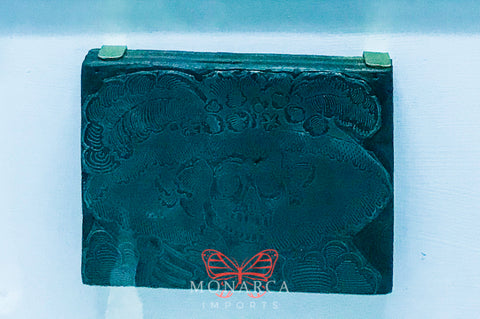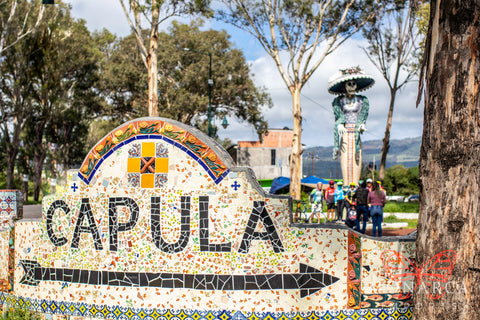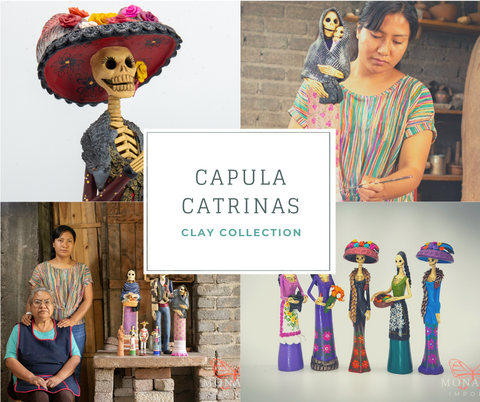Dia de los Muertos is a Mexican tradition like no other. We remember and honor our dead loved ones by putting up their pictures, flowers (such as the Mexican Marigold) and candles in an altar. The altar is also complemented by serving them their favorite food and setting up their favorite things. This is essentially an opportunity to commune with our loved ones that have passed.
The relationship with death is quite unique in this tradition.
The Disney movie Coco showcased this annual tradition of setting up an altar that we celebrate on November 2nd.

Disney's rendition of an altar of the Day of the Dead
La Catrina: Its first origins
In 1910, cartoon illustrator and lithographer José Guadalupe Posada created an etching of an elegant, female skeleton he called La Calavera Catrina. Posada produced popular illustrations that influenced numerous artists and cartoonists. He used skulls and bones (calaveras) to drive his points across. His work was primarily political in nature, but later in his career his work was focused on producing lithograph illustrations that were centered around death and social topics.

Lithograph found in the Museo José Guadalupe Posada in Aguascalientes, México
Posada was born in Aguascalientes, Mexico. In this same city you will find a museum with some of his work, along with an original etching of La Catrina.
"La Catrina has become the referential image of Death in Mexico, it is common to see her embodied as part of the celebrations of Day of the Dead throughout the country; she has become a motive for the creation of handcrafts made from clay or other materials, her representations may vary, as well as the hat." -- Posada

Original Catrina etching used in Posada’s lithographs
Later, the Diego Rivera mural, Sueño de una Tarde Dominical en la Alameda Central (1947) elevated its popularity cementing the Catrina's popularity in Mexico, turning it into a national icon.

Diego Rivera's mural, Sueño de una Tarde Dominical en la Alameda Central
La Catrina today
Today, La Catrina is an iconic character in all of México and around the world. The town of Capula, in the state of Michoacán, became the birthplace of the clay Catrina.
 There's a giant Catrina at the entrance of Capula, Michoacán
There's a giant Catrina at the entrance of Capula, Michoacán
Juan Torres, a painter and sculptor , arrived to Capula sometime in the 1980's. He was the pioneer who first created a Catrina out of clay. Juan Torres still lives in Capula today, and has an art gallery. He's primarily a painter, but his footprint in Capula is seen in every corner of the small town today.
 The day I met Juan Torres in his home in Capula, Mexico.
The day I met Juan Torres in his home in Capula, Mexico.
Alvaro de la Cruz, a Capula native, was one of the initial apprentices of Juan Torres, working alongside with him creating these novel iconic clay figures. After Mr. de la Cruz’ passing, his family continues this wonderful tradition to this day.
 Mrs. María Candelaria Hernández Silva and her daughter, Diana de la Cruz
Mrs. María Candelaria Hernández Silva and her daughter, Diana de la Cruz
Capula still remains a very small town, just a few minutes from Morelia, the capital of the state. Its main street has several shops where artisans sell their clay crafts including Catrinas and other pieces.
The De la Cruz Catrinas are part of our Clay Collection, and continue to live on through Mr. Alvaro de la Cruz' wife and children.
 Clay Catrina by the de la Cruz family
Clay Catrina by the de la Cruz family
Ever since, Catrinas have taken a variety of looks, including a diversity of outfits, professions, and looks. All of them with an incredible amount of detail. The colors are generally stunning, and almost inevitably, it is easy to find a connection with one of them!
-----------------
To meet our other artisan families, make sure to visit our article Meet Our Michoacán Artisan.



Leave a comment